If you are used to riding a manual or automatic quad, you might be asking yourself: “How do you shift a semi automatic ATV?“. I’m here to tell you it’s not that difficult. With my complete guide to shifting gears on a Semi-Auto, you will be ready to hit the trails in no time!
Shifting gears on a Semi-Automatic ATV is similar to a manual gear system, except for operating the clutch. While on a manual quad you would use a clutch pedal on the left handlebar, with a Semi-Auto you only use the throttle and a foot pedal to shift gears. Start out by letting off the throttle with your right hand, then use your left foot to change gears. In order to shift up, put your toes under the foot pedal and lift up until it clicks. When downshifting, push your foot down on the pedal to change to a lower gear. As for putting the quad in reverse, a Semi-Automatic ATV will have either a button or a lever that needs to be activated at the same time as the foot pedal is pushed down.
If you are a first time ATV owner, this process might seem a bit confusing. Keep on reading for some beginner tips on how to achieve a smooth transition between gears on your Semi-Automatic, as well as a video guide to help you get the hang of it.
How Do You Shift a Semi Automatic ATV?Semi-Automatic gear systems are not as popular with off-road riders as manual and automatic, but they have a lot of benefits for experienced racers and beginners alike. If this is your first time riding an ATV or you want to buy your young one their first quad, a Semi-Auto might be the perfect choice for you.
I like this gear system because it still offers you full control over the gear you’re riding with, while eliminating the difficult combination of clutch, throttle, and foot pedal system that you find on a manual. Once you get a grasp on how to swiftly switch gears without jerking your 4 wheeler, you will be able to conquer even the most difficult trails out there.
Whenever I ride a Semi-Automatic, also called a Non-Clutch ATV by some, I look for the user manual. Most Semi-Autos will ride the same, but it’s good to take a look at the gear chart and reverse system which can be different for your model. For instance, Honda has a unique Semi-Auto gear system that operates a bit differently than others.
For today, I’ll go over the most common type of gear shifting that I’ve seen on dozens of ATVs so that you can get to riding right away. The most common gear chart reads as follows: 1-N-2-3-4-5, where N stands for Neutral. Your quad might have 6 gears or have Neutral as the first gear, so make sure to check out your ATV’s manual beforehand.
Starting out in Neutral, I will let off the throttle and push down the pedal in front of my left foot peg for a half-click to reach first gear. On ATVs, the throttle is a lever located on your right handlebar that you operate with your thumb. It’s important to give it a constant push, so that you do not jerk your quad between gears.
Afterward, when I want to shift to a higher gear, I let off the throttle for about half or 3 quarters of the way and push up the foot pedal from underneath, with my toes. Not letting off the thorttle completely will help make the transition between gears smooth and you will have enough acceleration to get to a higher gear faster. If Neutral is located between your first and second gear, make sure to push up enough to get to second gear.
In order to downshift, I will let the ATV slow down or activate the brake, let off throttle, and push down on the foot pedal. If you are going slow enough, you will be able to go from second gear straight to Neutral, but this will take a bit of practice.
Below is a short YouTube video I found that explains how to shift gears on a Semi-Automatic Yamaha Bear Tracker 250. This will hopefully help you visualize the process better and show you how to get into reverse when you have a lever.
How Do You Know When to Shift Gear on a ATV?Much like on a shift stick car, the engine on your ATV will let you know when to shift gears.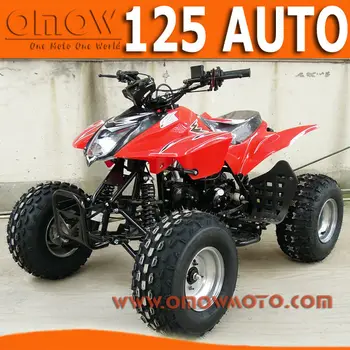 You need to listen to the RPM (revolutions per minute) of your quad, which essentially means paying attention to how riled up your engine gets.
You need to listen to the RPM (revolutions per minute) of your quad, which essentially means paying attention to how riled up your engine gets.
If your engine roars with power, then it means you need to give it more gas with the throttle and shift to a higher gear. On the opposite spectrum, if your quad seems like it’s bogging down, then you need to downshift to a lower gear.
Until you get used to listening to your engine, you can learn the speeds of each gear on your ATV and read the speedometer to change gears. To shift up, make sure you reach the maximum speed of the gear you are currently in. To downshift, you need to arrive below the max speed of the gear you’re trying to reach and then push down on the pedal.
Are you looking to buy a new ATV? You might want to check out the article I wrote about the top 5 fastest ASTVs in 2021 where I highlight the best models from each 5-star brand.
Is It Bad to Shift at High RPM?There are very low risks associated with shifting at high RPM, such as slightly shortening your engine life.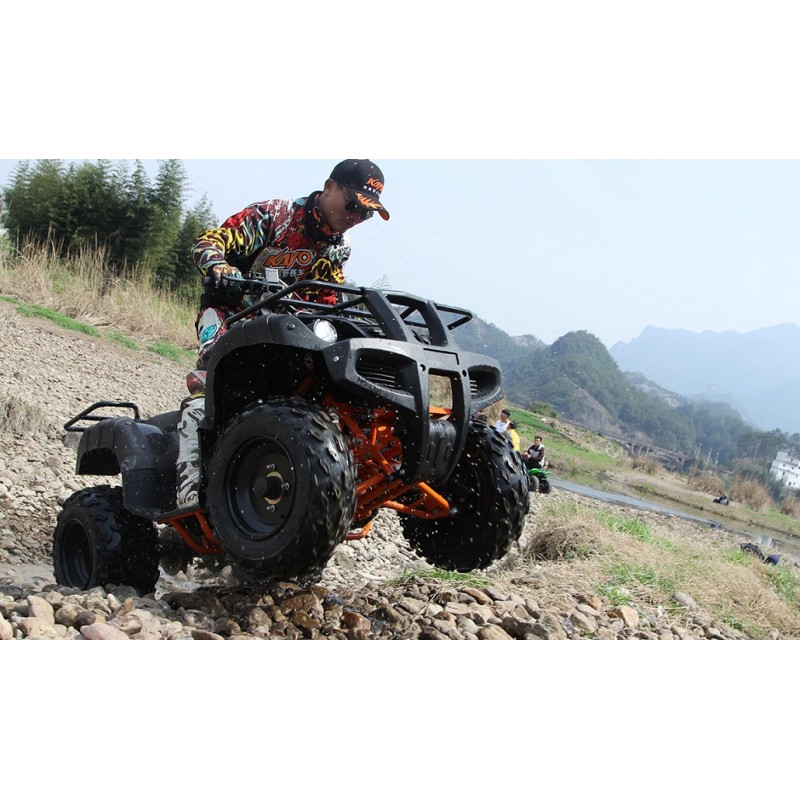 Shifting at high RPM is a practice that most experienced ATV riders will do because it gives you smoother transitions between gears and more power. All-Terrain Vehicles are made to withstand difficult conditions, so high RPM shifting will not be an issue for your quad’s engine. Low RPM shifting, on the other hand, can put a lot of stress on your engine and destroy your pistons so it’s best to avoid it.
Shifting at high RPM is a practice that most experienced ATV riders will do because it gives you smoother transitions between gears and more power. All-Terrain Vehicles are made to withstand difficult conditions, so high RPM shifting will not be an issue for your quad’s engine. Low RPM shifting, on the other hand, can put a lot of stress on your engine and destroy your pistons so it’s best to avoid it.
If you use my guide on shifting gears on a Semi-Automatic ATV, you will not have to worry about long-term damage to your engine. I recommend you take a look at your quad’s manual as well, so you get accustomed to your model’s quirks and needs.
In case you are stressed about your first time riding a quad, you can start practicing in an isolated place. I promise you that you will get the hang of it in no time, especially since a Semi-Auto is easier to use than a manual gear system. Now go out there and shift gears like a true pro!
In 1970, Honda came up with a brochure titled “What Is It?” launching their revolutionary off-road vehicle.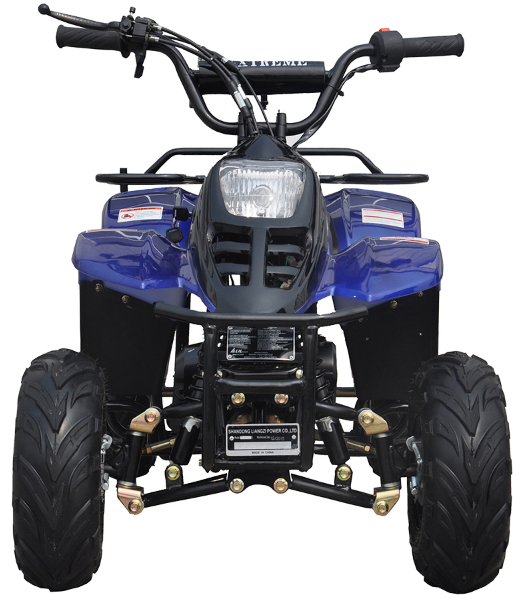 It wasn’t until 1980 that Honda introduced the ATC185. It was equipped with a five-speed semi automatic transmission with an ultra-low first gear. Semi automatic ATVs have improved since then. You have different models to choose from and you can find the best semi automatic ATV that’s right for you. You still need to know more about the difference between manual transmission ATV, semi automatic ATV, and fully automatic ATVs.
It wasn’t until 1980 that Honda introduced the ATC185. It was equipped with a five-speed semi automatic transmission with an ultra-low first gear. Semi automatic ATVs have improved since then. You have different models to choose from and you can find the best semi automatic ATV that’s right for you. You still need to know more about the difference between manual transmission ATV, semi automatic ATV, and fully automatic ATVs.
How do know which transmission is right for you? It all depends on your style of riding and what you use the ATVs for. You should do your research before picking your next ATV ride.
Semi-automatic ATVs are dependable, tough, and great for any activity that requires slow consistent speed. This can include pulling loads or heavy chores like using your ATV for plowing snow. Keep on reading for everything you need to know about semi automatic ATVs.
Table of Contents
What Is a Semi Automatic ATV?A transmission supplies controlled power from the engine to the wheels.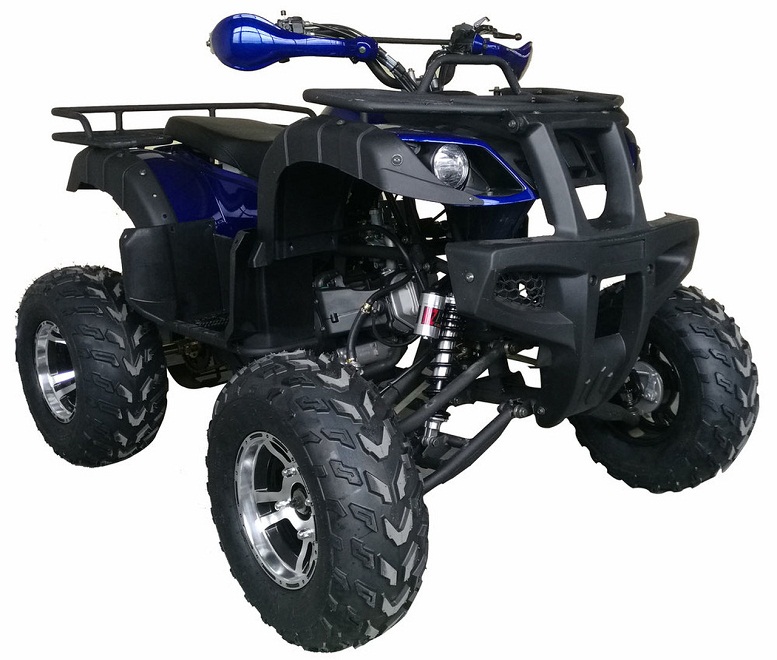 Transmissions allow for faster acceleration from a stop. They also prevent engine damage and overheating by making sure that the engine runs more slowly while driving at consistent speeds.
Transmissions allow for faster acceleration from a stop. They also prevent engine damage and overheating by making sure that the engine runs more slowly while driving at consistent speeds.
When looking at ATVs, you need to know that there can be 3 types of transmissions:
For a manual ATV, you need to let off the throttle, pull the manual clutch, and shift through the gears using the foot shifter. On the other hand, you can shift gears automatically with a fully automatic ATV. A semi-automatic combines the best of both manual and fully automatic ATVs.
With a semi-automatic transmission, there is no clutch control. You can change gears by pushing a button. You can hold the gear without the hassle of operating a clutch lever.
A semi-automatic ATV is great when you need to hold a consistent speed, which means they are great for towing and hauling. So, if you’re thinking of using your ATV for recreational and utility purposes, then a semi-automatic ATV may be the right option for you. This is especially true if you have some experience with ATVs, but you’re not comfortable with the manual transmission.
This is especially true if you have some experience with ATVs, but you’re not comfortable with the manual transmission.
The fact that both are automatic may lead to some confusion, so let’s dive a little deeper to understand the difference between semi automatic and fully automatic ATVs.
You can shift gears on a semi-automatic ATV with your left foot. You have five forward gears and one reverse gear. Semi-automatic ATVs have been around for a while, so you know they’re reliable. They’re great for both recreational purposes and work where you need a slow constant speed.
With a fully automatic ATV, you just need to place it in gear and move. You don’t need to worry about shifting gears or clutches. Automatic transmissions were first used in snowmobiles and migrated to ATVs. A fully automatic ATV is pretty popular because of its ease and convenience, especially for beginners. They’re much better for long rides where you don’t want to spend all that time shifting gears.
If you’re wondering about fuel economy for those short or long drives, then check out this blog post for more information.
How Does a Semi-Automatic ATV Work?A semi-automatic ATV works by sending electric signals to a different part of the ATV. So, you don’t need to worry about foot pedals. You have a switch and a hydraulic motor.
The gear doesn’t shift automatically. After the gears get a signal from the engine, it’ll engage. If the gear can rotate without the engine, then it’ll automatically disengage.
Do Semi-Automatic ATVs Have Clutches?Yes, semi-automatic ATVs have clutches. They work the same as semi-automatic transmissions. You don’t have to worry about pedals and cables.
You can shift gears by simply pushing a button on the handle of your ATV when you want to change gears. Everything else will be done automatically.
This means that a semi-automatic clutch gets rid of all the complexity and hassle of a clutch.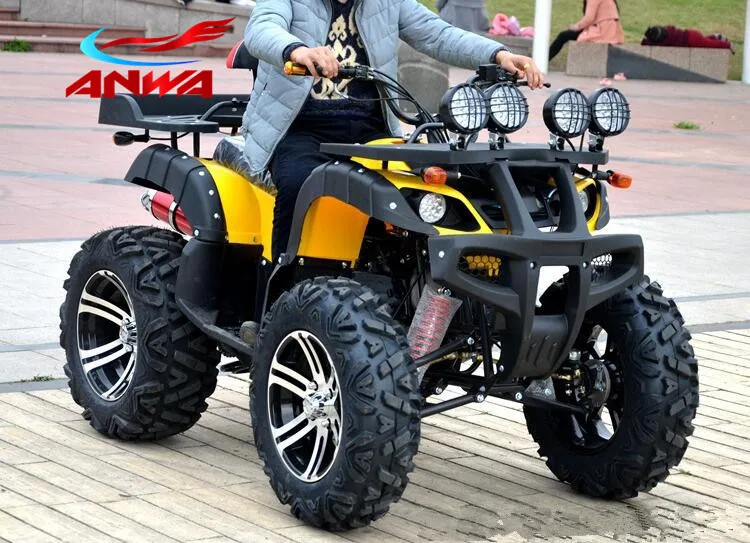 You can focus on the drive and terrain around you rather than worry about a clutch.
You can focus on the drive and terrain around you rather than worry about a clutch.
Also, remember a semi-automatic clutch helps your engine’s life by reducing wear and tear. They also help prevent your ATV engine from overheating.
How to Drive a Semi-Automatic ATV and How to Shift Gears?Unlike a fully automatic ATV, you need to know how to shift gears in a semi-automatic ATV. You don’t need a clutch to shift gears, but you do need to know when to press the button to shift gears.
Remember to close the throttle while shifting to prevent the front wheels from lifting. Most importantly, listen to your engine. The more practice you have, the easier it’ll be to shift gears. Over time, you can tell when to shift gears or adjust the throttle by the sound of the engine.
With practice, you’ll also be able to tell where the engagement point is. This will ensure you have a smooth shift without stalling. Some Honda models have a “SportClutch” that can help you prevent stalling.
There are still several old semi-automatic ATVs. But, if you’re looking for a new ATV, your decision is easier because Honda is the only company with semi-automatic ATVs. That doesn’t mean your choices are limited because you have several Honda models to choose from.
Honda FourTrax Foreman Rubicon 4×4 EPSA Honda FourTrax Foreman 4×4 EPS is comfortable and tough. It’s one of the top machines riders look for when they want to get big jobs done and have fun adventures.
It has a 5-speed semi-automatic transmission. You also get an Independent Rear Suspension (IRS) for a smooth ride. You have a single-cylinder 518cc engine that means great performance and better hill-climbing. It’s a great choice for work and play.
The electric reverse is convenient and easy to use. You can shift from forward to reverse repeatedly. It’s a great ATV for plowing snow.
Every Foreman also uses a swingarm rear suspension that’s perfect for hard work or towing.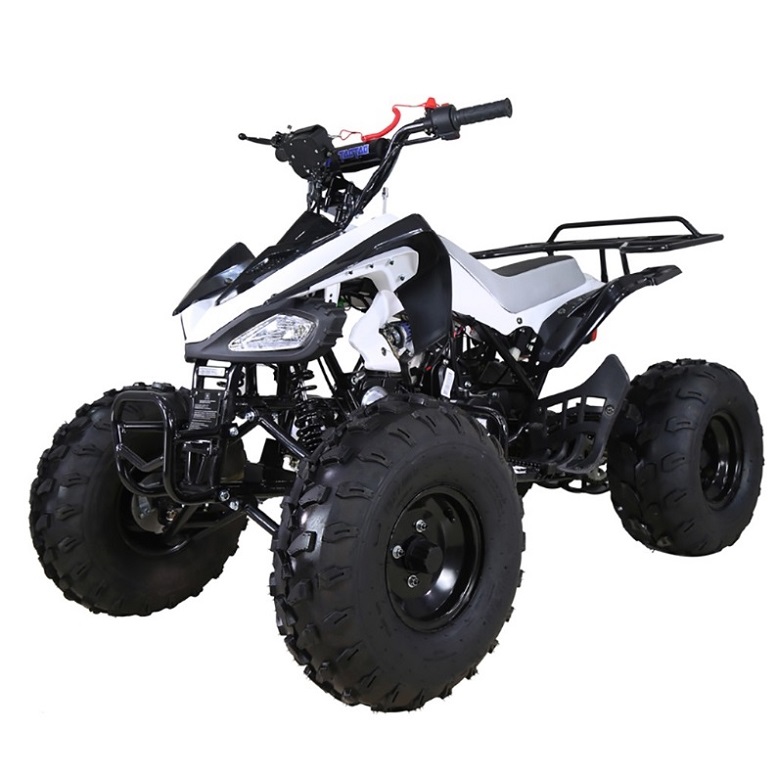
If you want another option, you can also check out the Honda FourTrax Foreman Rubicon 4×4 EPS. Check out the other features of the Rubicon here.
Honda FourTrax Rancher 4X4 ESThe Rancher has a bunch of different options for you to choose from. Every model has front and rear racks, a spacious front utility compartment, and an easy-to-use reverse system. The Rancher has a 420cc liquid-cooled engine, which is light and nimble going up to a top speed of 51 mph.
You can choose between 2WD to 4WD so you have the choice between lighter steering and maximizing traction. Check out more features for your Rancher semi-automatic ATV.
You can even choose the FourTrax Rancher ES, which is the cheaper model.
Honda TRX250XA Hondo TRX250X is meant for teenagers and adults. It has a 229cc engine with a five-speed manual transmission. It has a “SportClutch” which is basically a semi-automatic clutch. You get to combine manual transmission with stall prevention getting the best of both worlds.
You’ll love the light handling, wide powerband, and long suspension travel. Check out its other features here.
You can also check out the Honda TRX90X for kids, which has an 86cc four-stroke engine. It has a keyed ignition allowing parents to control who goes riding and when. You also have an adjustable throttle limit that lets you control the top speed and power of your kid’s ATV.
There aren’t many semi-automatic models for your consideration because more people lean towards automatic. If you want a mix of work and play, then you need to consider your semi-automatic ATV options. You can look at older model ATVs to find the right fit.
The pricing of the newer models depends on the trim and features you want. For example, a 2022 Fourtrax Foreman 4×4 has a base price of $7,499, whereas the base price of a 2022 Fourtrax Rancher is $5,599. If you’re wondering about how much ATVs cost, check out this blog post.
Check Out More Tips and Tricks on ATV RidingNow you know everything there is to know about semi automatic ATVs.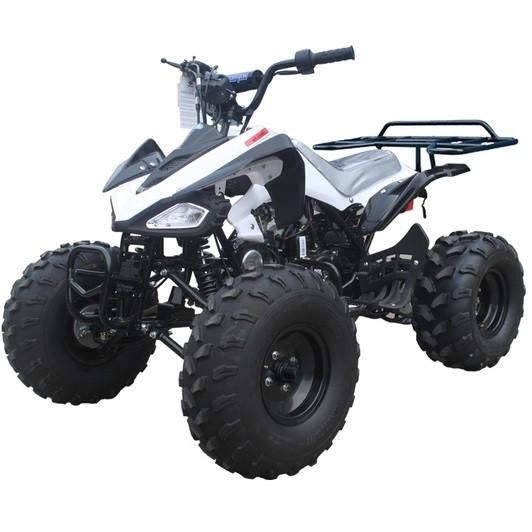 You know the difference between a manual and a semi-automatic ATV. You even know what the best semi-automatic ATV models are, so you can start your ATV adventure.
You know the difference between a manual and a semi-automatic ATV. You even know what the best semi-automatic ATV models are, so you can start your ATV adventure.
You probably have more questions that you need to get answered before you go buy your next ATV. You may be interested in learning about why ATVs are not street legal, how to jack up an ATV, or the ATV helmet rules. Maybe you want to know about ATV sizes by age.
Check out our blog for more articles to answer all your questions about semi-automatic ATVs and ATV riding, including whether ATV tracks improve performance.
ATV riding techniques could be the subject of a full book. In the same article, we want to reveal to you the basics of safe riding. At first glance, there is nothing complicated in driving ATVs - you just need to steer and enjoy riding.
When driving over bumps, for example, those of the "wave" type, the driver must change his position all the time.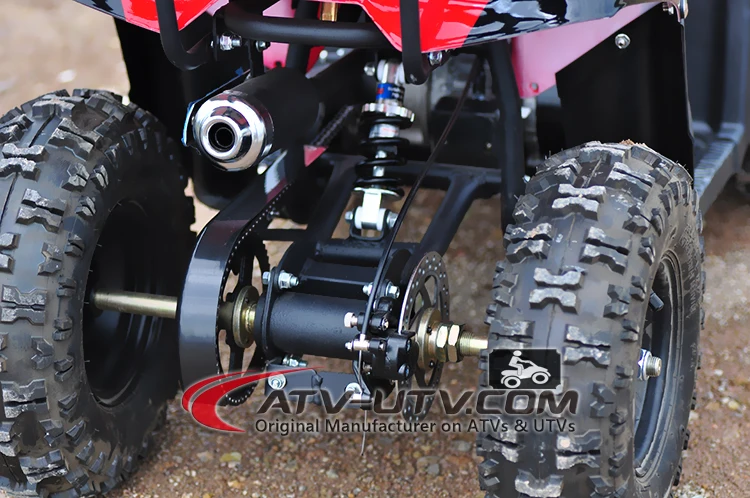 So, when approaching an obstacle, you must shift your body back, otherwise you can hit the obstacle with your wheels. When driving over a bump, you need to move the body back forward, thus preventing excessive separation of the front wheels, i.e. rearing up the ATV. Then, when the rear wheels come off the ground, you need to move back again, otherwise you can fall out of the saddle, hitting your knees on the steering wheel.
So, when approaching an obstacle, you must shift your body back, otherwise you can hit the obstacle with your wheels. When driving over a bump, you need to move the body back forward, thus preventing excessive separation of the front wheels, i.e. rearing up the ATV. Then, when the rear wheels come off the ground, you need to move back again, otherwise you can fall out of the saddle, hitting your knees on the steering wheel.

Moving in a straight line at low speeds (up to 40 km/h), you can afford to relax. But at higher speeds or when passing sharp turns and slopes, the driver must move very actively. Indeed, due to the high center of gravity, short wheelbase and small width, ATVs are very prone to rollovers. In addition, if the motorcycle flies separately from the motorcyclist during falls, then the ATV most often covers the driver. Therefore, in order for ATV riding not to end with serious injuries, it is necessary to study the driving rules and strictly follow them.
ATV rider's weight is an important factor that affects machine handling. By shifting their weight, the driver can unload or load the front or rear of the ATV, thus compensating for centrifugal forces.
The first rule you need to learn is that when riding an ATV, you need to relax your arms. When driving, the driver can always let go of his hands, because his legs are holding him in the saddle.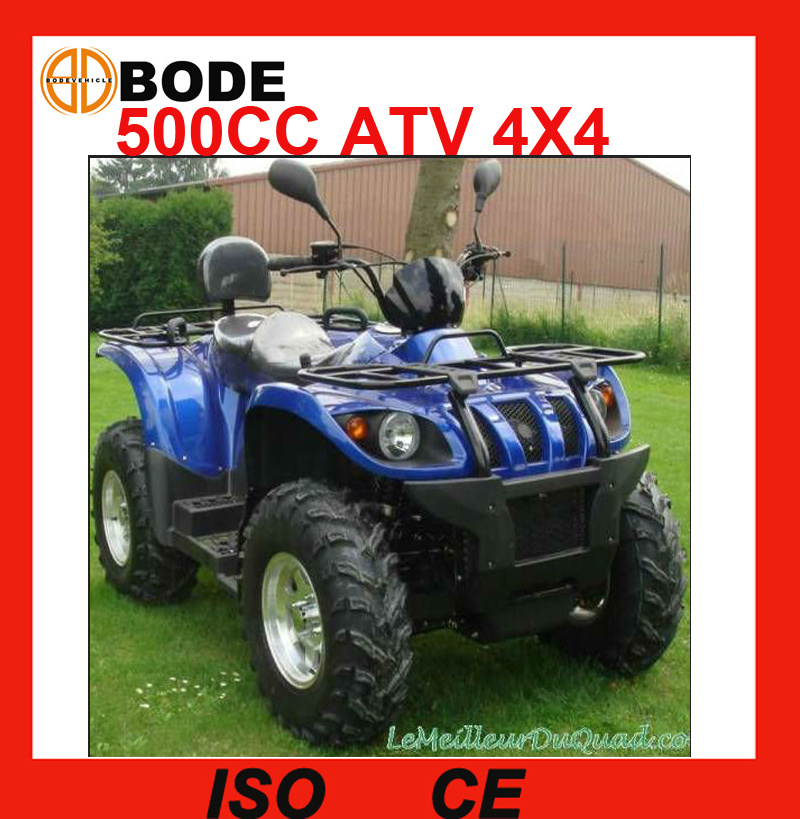 As the speed increases, the load on the legs also increases.
As the speed increases, the load on the legs also increases.
Conventionally, three racks are distinguished. The middle stance is used when driving in a straight line without turning. When opening the gas, the body must be moved forward to unload the hands. Thus, the front strut is obtained. When braking and closing the gas, the body, on the contrary, must be moved back, i.e. take a back seat. By the way, the word "stand" comes from the word "stand", and this name is not accidental. When actively riding an ATV, you do not have to sit. Standing on an ATV lowers your center of gravity. After all, there is a huge difference between the weight on a high saddle and the weight on the footrests. And the effect of shifting the body in a standing position is much greater than fidgeting back and forth on the saddle.
When going through a turn on a motorcycle, it is tilted inward, thus struggling with centrifugal force. But you can't do that with a quad bike. Therefore, it is necessary to use the weight of the driver. The main rule here is to always transfer the weight inside the turn. Moreover, it is necessary not only to tilt your shoulders. It is necessary to hang the entire body, including the fifth point. Only the shin and knee hold on to the saddle. Of course, if you turn at minimum speed, then you can limit yourself to turning the steering wheel.
Therefore, it is necessary to use the weight of the driver. The main rule here is to always transfer the weight inside the turn. Moreover, it is necessary not only to tilt your shoulders. It is necessary to hang the entire body, including the fifth point. Only the shin and knee hold on to the saddle. Of course, if you turn at minimum speed, then you can limit yourself to turning the steering wheel.
The correct stance is characterized by slightly bent knees, elbows set apart, and a slightly arched and relaxed back. Why not stand on straight legs or keep your back straight and tense? Because bent knees allow you to absorb shock coming from uneven terrain. By the way, the force of these blows is sometimes quite enough to knock the driver out of the saddle. A straight tense back under such conditions can lead to injury to the intervertebral discs and even a compression fracture of the spine. Yes, and the internal organs with the wrong fit will have a hard time.
Active ATV riding requires good physical shape. So, in quad schools, the duration of the lesson does not exceed an hour, and at the end of the lesson, students can literally be squeezed out. And riding an ATV off-road is also an activity worthy of training in the gym.
When riding non-sport ATVs, it is best to avoid jumping. Firstly, this way you can break the ATV. Secondly, in order to safely perform such tricks, the ATV motor must have high-torque and fast response to the throttle. If, nevertheless, the jump could not be avoided, then it is necessary to land in the middle stance, but be ready to move to the back. When the wheels touch the ground, you need to slightly open the gas. It is better not to use four-wheel drive when jumping.
Every time you ride an ATV, you need to practice looking into the distance. This is necessary to develop the habit of evaluating the trajectory of movement in advance. Beginners often do not have time to track the road, and at some point they are not ready to perform adequate actions. And another, very predictable obstacle, can become a problem for them.
And another, very predictable obstacle, can become a problem for them.
| When moving along a slope, it is necessary to move the body in the direction opposite to the slope. On the steepest sections, full overhang should be used, such as when cornering at speed.
|
Before you start climbing, you need to pick up speed. Then the resulting inertia will allow you to smoothly drive into the steepness. If you suddenly open the gas directly on the rise, the ATV may tip over.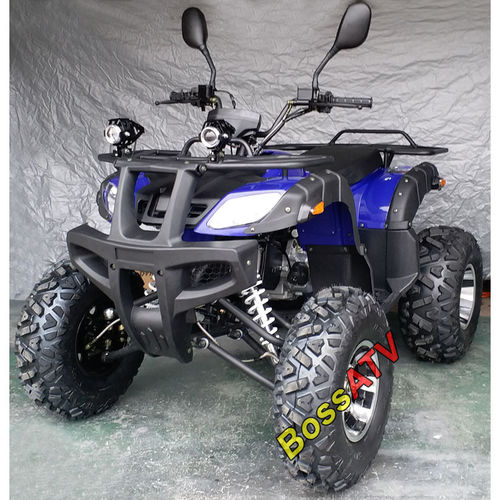 Climbing should be in the most forward stance and on medium gas. If the incline is too steep, the ATV may roll backward when the throttle is released. In this case, you should not brake with the front axle, not the rear. If the ATV starts to roll over, you can try to jump to the side, but this acrobatic stunt is unlikely to be successful.
Climbing should be in the most forward stance and on medium gas. If the incline is too steep, the ATV may roll backward when the throttle is released. In this case, you should not brake with the front axle, not the rear. If the ATV starts to roll over, you can try to jump to the side, but this acrobatic stunt is unlikely to be successful.
If the driver moves his torso out of the turn, then his centrifugal forces will pull him to the outer radius, and in order to stay in the saddle, he will need to firmly grip the steering wheel. At the same time, the ATV will definitely try to roll over. To avoid such an unpleasant situation, it is always necessary to remember a simple rule - to shift the body only in the direction of rotation. Those. if we turn to the left, then we shift the body to the left side, and vice versa.
Descents must be made in the C-pillar. In this case, the arms must be extended and slightly bent at the elbows.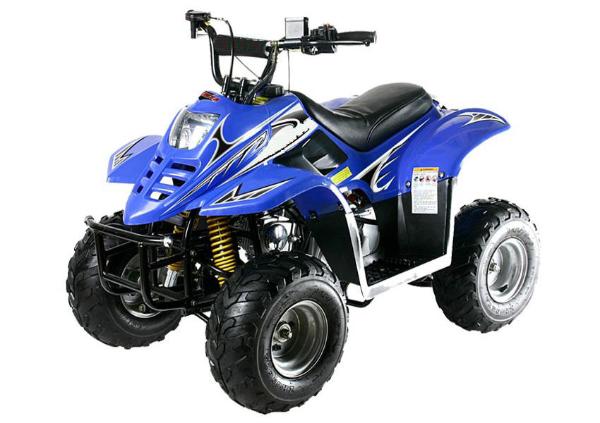 There is no emphasis on the hands, you can even let them go, holding on with your feet. The steeper the descent, the more the driver must move the body back. The lower photos show the consequences of a descent in an incorrect landing. The main mistakes - the driver shifted the weight forward and pressed his hands to the body.
There is no emphasis on the hands, you can even let them go, holding on with your feet. The steeper the descent, the more the driver must move the body back. The lower photos show the consequences of a descent in an incorrect landing. The main mistakes - the driver shifted the weight forward and pressed his hands to the body.
Moscow:
1st Varshavsky proezd, 2s8
+7 499 500-97-34 Call me back
Without this novelty, the range would not be complete. Semi-automatic transmission, cardan, increased power. It was YACOTA 250 that became the very notorious "icing on the cake", which was so lacking in the YACOTA ATV lineup.
At first glance, the ATV inspired respect and trust. But in order to verify this in practice, we went to test the new product in Karelia on real off-road, where, as many assure, there is nothing for rear-wheel drive.
But let's go in order and first go through the general technical characteristics of the ATV.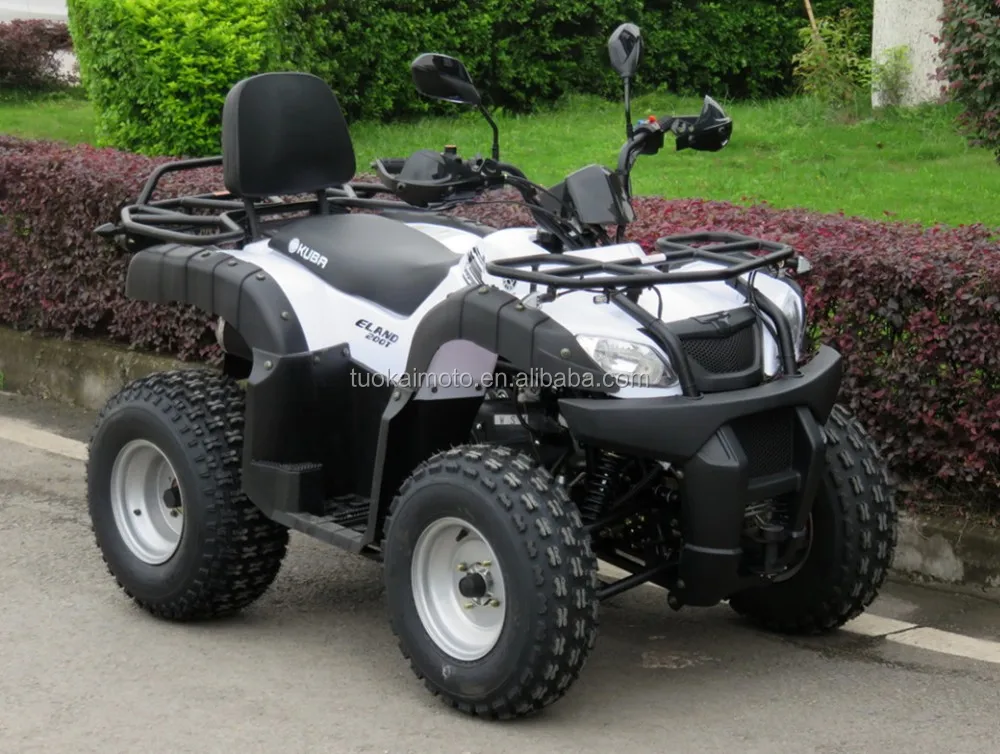
It is equipped with a 250 cc engine and produces 20 hp, accelerating the ATV to 85-90 km/h. The engine has a balance shaft, and as a result - the complete absence of vibration. Box semi-automatic 5+1. Shift forward/reverse with a lever located to the left of the tank. Gear shifting for forward movement is carried out with a foot pad without clutch, all gears are up.
ATV is equipped with both electric and manual start, i.e. it is possible to start it without a battery.
Forced air cooling system, there are 2 fans. The front suspension is single-lever with shock absorber struts, the rear suspension is pendulum with a monoshock absorber.
Hydraulic all-round brakes, cable parking brake (adjustable). The drive is cardan, which makes the ATV more practical and convenient to use. The volume of the fuel tank is 12 liters, it consumes 6-7 liters per 100 km. Fuel, naturally, AI92. In the basic configuration, it comes with alloy wheels with a dimension of 23x7-R10 at the front and 22x10-R10 at the rear.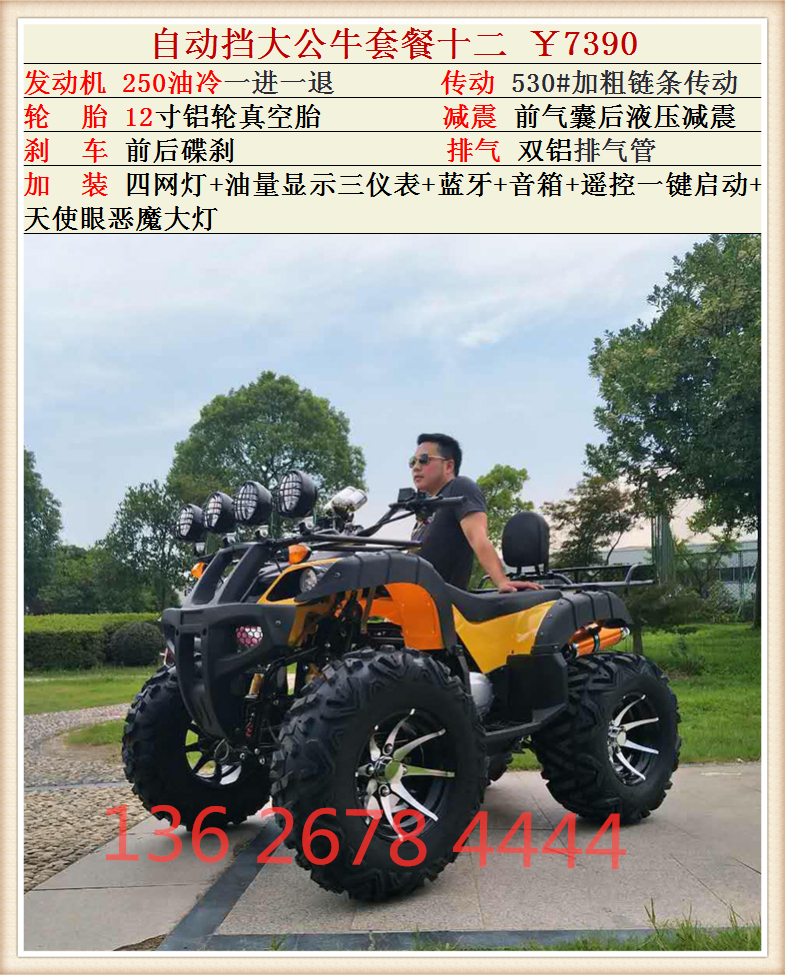 Tire tread - sandy.
Tire tread - sandy.
From pleasant little things: on the ATV there is an impressive glove compartment, massive trunks in front and behind, a steering wheel lock, a cigarette lighter and a USB output (you can always charge your phone or navigator), as well as a wide and very soft seat.
But all this is dry data, but what about in reality? In fact, the ATV traveled 105 km, overcoming fords, roads washed out by rains, climbing with a slope of 20 degrees, rocky areas. And, in general, it left a pleasant impression on the participants of the test drive, with the exception of a number of shortcomings.
Water, as you know, is capable of delivering quite a few troubles and problems. If water gets into the air filter, there is a risk of ruining the engine and getting into expensive repairs. That is why 4WD quads often have the snorkel removed to avoid unnecessary problems, but rear wheel drive quads almost never do this. It is generally accepted that the rear-wheel drive is unlikely to pass through the water and the snorkel is useless to him.
It is generally accepted that the rear-wheel drive is unlikely to pass through the water and the snorkel is useless to him.
We moved away from this stereotype and went for a test to the region, where there is no shortage of fords. During the test, the novelty overcame several fords, the maximum depth of which reached 70 cm.
The problem arose only at the moment when the ATV went ¾ into the water. The exhaust took on water and the ATV with its 250cc couldn't push the water out of it. Slightly raising the face of the ATV, we managed to drain some of the water and start it. The air filter was still dry. Its good location saves you from trouble when passing fords. Since the filter is located under the seat, and takes air from under the tank, with this arrangement it is not so easy to “drown” the ATV.
Although there was no asphalt throughout the entire route, there were still short and relatively flat gravel sections. It was not possible to disperse the novelty to the maximum possible speed, but it was still possible to see the figure of 85 km / h and there was still potential for overclocking. At this speed, the ATV “scours” a little on the road and requires more attention from the driver. But the “younger brother” of the novelty - YACOTA CABO 200 is many times more stable at the same speed and this is achieved due to a different front suspension.
It was not possible to disperse the novelty to the maximum possible speed, but it was still possible to see the figure of 85 km / h and there was still potential for overclocking. At this speed, the ATV “scours” a little on the road and requires more attention from the driver. But the “younger brother” of the novelty - YACOTA CABO 200 is many times more stable at the same speed and this is achieved due to a different front suspension.
On the other hand, the new YACOTA 250 model has an order of magnitude less vibration. Even the CABO 200 boasts minimal vibration and comfort at high mileage, but the novelty has no vibration at all, which is achieved due to the anti-vibration engine.
As for comfort both for the driver and the passenger, the novelty undoubtedly outperforms the CABO 200 having only one drawback - the U-shaped rear trunk fetters the passenger, but practically does not cause any discomfort.

During the test, the equipment was faced with the task of overcoming a slope with a slope of up to 30 degrees. And if YACOTA 250 easily coped with the task, then CABO 200 lost and could not overcome the climb. The difference in engine power is only 3 hp. played a decisive role. The novelty was stopped by often growing trees on the rise, otherwise the ATV confidently climbed up.
What's an ATV test drive without some real dirt? None! So in this test, ATVs were waiting for a section with dirt on the wheel and stones. And again, the difference is obvious, where the YACOTA 250 easily passed, the CABO 200 began to slip. And here the main thing is not to try to degas the ATV, but to take out the ATV by descending from it. Otherwise, the variator will simply burn out. But with proper management skills, the CABO 200 can overcome offroad. So, for example, Dmitry Fedotov from Omoymot easily drove through the whole area of mud on a 200-ke without “assault”, limiting himself to a rich experience in driving atv.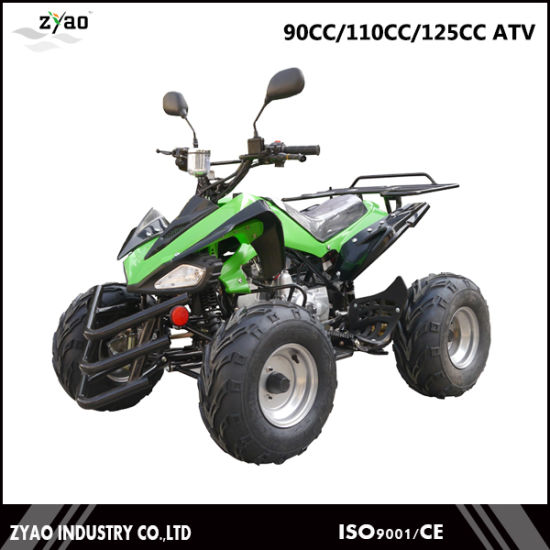 Well, the YACOTA 250 goes through all the dirt in first gear, which actually works like a low gear.
Well, the YACOTA 250 goes through all the dirt in first gear, which actually works like a low gear.
Also, when passing through a rocky section, the novelty outperformed its younger brother due to its higher ground clearance. The difference of only 3 cm allowed the YACOTA 250 to pass over the boulders without “losses”, while the 200 caught the stones a couple of times with protection.
Despite the rather nimble disposition, the consumption of the novelty is within the normal range and fluctuates in the range of 5-6 liters per 100 km. So, with a total run of 105 km, the ATV returned to the base with a half-full tank, and this despite the fact that he was carrying two people with a total weight of 160 kg and belongings in addition. Yes, and climbs with overcoming mud areas increased consumption, but the ATV did not exceed the declared consumption.
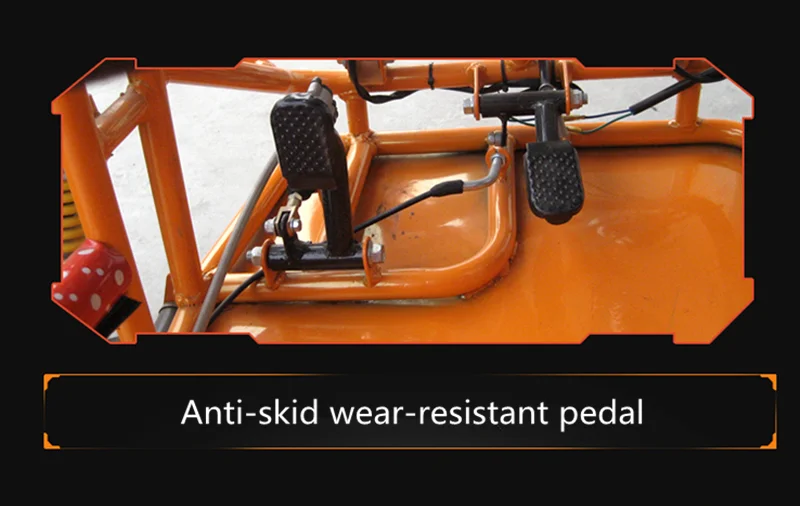
According to the results of the test, we can safely say that the new product deserves attention and is the best representative in its class. The parameters of cross-country ability, design reliability and comfort make the ATV optimal in preparation for a real off-road. Of course, it is impossible to call an ATV 100% suitable for off-roading, it will undoubtedly lose to its all-wheel drive counterparts, but in the rear-wheel drive class it will boldly take the place of honor of the best.